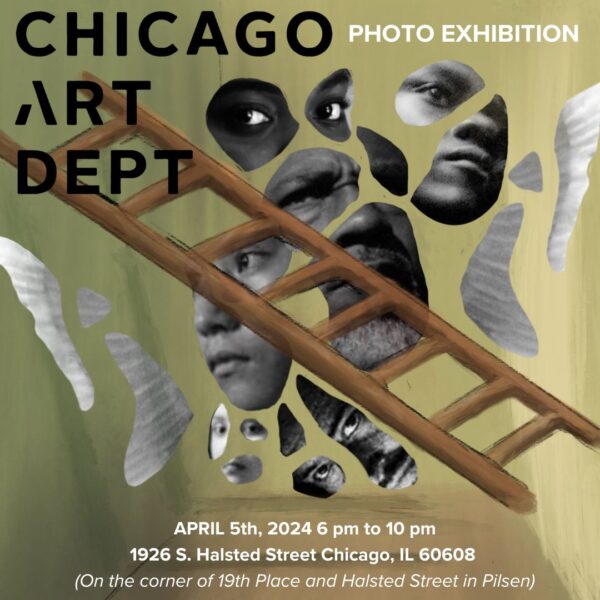PHOTOGRAPHY EXHIBITION
14 April – 28 April

Photography offers a profound lens through which to understand our society’s most challenging aspects. However, its ability to reveal truths is often constrained by traditional photojournalistic models, which overshadow its potential to co-create images with the public. This is particularly relevant when examining issues related to race, gender, colonialism, and community safety.
According to a 2022 study titled “The State of Photography” by The Knight Foundation and CatchLight io, 93 percent of surveyed photographers across 87 countries believe that collaboration with residents is “not a photojournalistic priority.”
The six photographers participating in this year’s Collective Learning Program at Chicago Art Department explore the possibilities and limitations of images. They offer alternative approaches by posing questions such as: How can we ensure our efforts are both effective and ethical? What critical insights can photography provide in the face of misinformation, societal tensions, and state censorship? How can we transcend the constraints of traditional and community-driven journalism models through photography? Ultimately, they prompt us to consider whether photography alone is sufficient to address complex societal issues.
Join us at Chicago Art Department on Friday, April 5th, from 6 pm to 10 pm to explore projects by cohort members:
- Jenny Casas explores conflicting versions of the truth by documenting the day to day life of a complex woman: her abuela.
- In collaboration with their grandmother, Efraín Soriano examines the realities of living with Dementia and the burden caregivers carry.
- Diego Garcia established trust with migrant families through his mutual aid work in Chicago. His project challenges the dominant narrative to be shaped by a migrant child’s hopes and dreams.
- Through black and white film and AI-generation, Wendy Wei challenges viewers’ conditioned response to images of migrant populations existing in public spaces while asking- what are the structural forces that shaped these behaviors?
- Using the visual style and sensibilities of street photography, Gilberto Villaseñor documents the gendered dimensions of caregiving through his mother’s care for his stepfather and grandmother, both of whom struggle with severe cognitive challenges.
- “What’s My School Worth?” by Alycia Kamil documents the 2013 school closures: the untold stories, erased voices, and its lasting impact. Through groundwork, raw conversations, and a lifelong commitment to truth-telling, this project puts forcibly forgotten narratives at the forefront.
About Collective Learning Program facilitator, Sebastián Hidalgo:
Sebastián Hidalgo is a photojournalist, reporter, and facilitator trained in civic newsrooms across Chicago. He has reported on issues ranging from the secret lives of teens working dangerous work shifts in Midwest factories to the lasting psychological effects of gentrification for mission-based newsrooms like ProPublica and City Bureau. In 2019, he was among the inaugural local fellows at CatchLight io and was part of a unique cohort of National Geographic Explorers and NatGeo Photo mentors. Hidalgo’s photographic and journalism work has been collected by The National Museum of Mexican Fine Art, Harvard Art Museum, and The United States Library of Congress. He continues to freelance as a reporter and photographer for various local and national news outlets and is currently a resident at Chicago Art Department.
